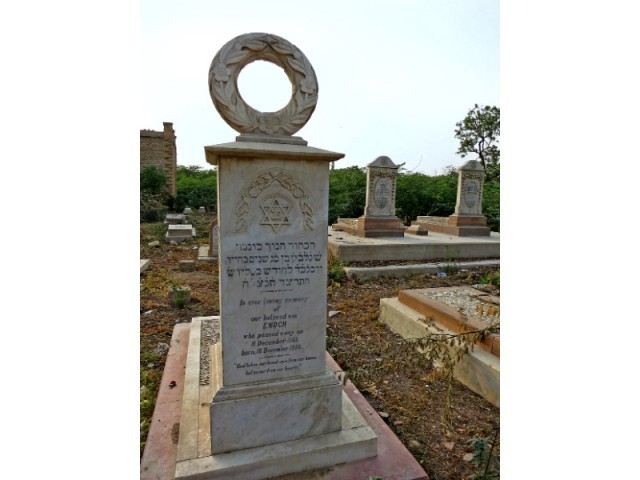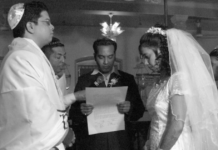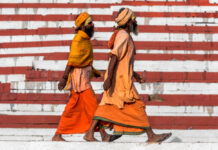KARACHI: Not many people know that a number of Karachi’s landmark buildings were designed by a Jewish architect Moses Somake (1875-1947). While he was born in Lahore, he lived most of his life in Karachi before migrating to England a few months before the Partition of India.
Reading a paper at Karachi conference here on Saturday, Gul Hasan Kalmatti, traced the history of Karachi’s Jewish community and recalled their contribution in making Karachi a vibrant metropolis.
“It’s funny how [the other speakers] have mentioned Kalhoros and Jatois,” said Kalmatti, referring to tribes who still exist today. “But today I am speaking of the Yahudis [Jews]. The Kalmattis are still here but the Jews are not.”
He revealed that historic buildings like Mules Mansion in Keamari, BVS Parsi High School and the Karachi Goan Association Hall in Saddar, Khaliqdina Hall on Bunder Road, Jaffer Faddoo Dispensary in Kharadar, Edward House on Victoria road and the famous Flagstaff House were all designed by Moses Somake. “They were our stones, our buildings,” he said. They are no longer there. The design and architecture of some famous hotels of yore – North-Western Hotel, Bristol Hotel and Carlton Hotel – was also conceived by this architect of Iraqi origin.
Tracing the history of Karachi’s lost Jewish community, Kalmatti said they belonged to the Bene Israel diaspora who had settled in the early 19th century coastal towns of India, including Karachi. Most of these people had settled in quarters along Lawrence Road, Ramswami Quarters and Ranchore Lane.
 You will still find nine streets from Jubilee market with the names from our Hindu, Jewish and Muslim heritage: Solomon David street, Seth Harchand street after the mayor of 18 years, one named after Yousaf Ali Alibhai who organised cricket.
You will still find nine streets from Jubilee market with the names from our Hindu, Jewish and Muslim heritage: Solomon David street, Seth Harchand street after the mayor of 18 years, one named after Yousaf Ali Alibhai who organised cricket.
Kalmatti regretted that the synagogue known as the Magen Shalom Synagogue was razed to the ground in July 1988, paving the way for a shopping plaza – Madiha Square. The synagogue was built by Solomon David Omerdekar in 1893. In 1895, a community hall was added to this synagogue in memory of Solomon’s wife, Shegulbai. His sons established a Hebrew school in the synagogue’s premises in 1918 and constructed a Nathan Abraham Hall. Solomon, who was the chief of the city’s Jewish community and a surveyor of the Karachi Municipality, lies buried along with his wife in Karachi.
According to Kalmatti, a leading member of city’s Jewish community, Abraham Reuben, was elected to the Karachi Municipal Corporation thrice – in 1919, 1936 and 1939. He established a school in 1927 that still exists in Liaquatabad’s Haji Mureed Goth and is named after him.
Giving the estimates about the growth of Jewish population in Karachi, Kalmatti said that according to the 1881 census, there were only 153 Jews in Karachi and the number at the time of Partition of India stood at 2,500. But most of them migrated to Israel after it came into being in 1948. However, by 1968 there were only 250 Jews living in Karachi. After their synagogue was destroyed, the remaining few Jews, fearing for their lives, started identifying themselves as Parsis and Christians.
At the end of his presentation Kalmatti sounded quiet poignant, recalling that Karachi was a tolerant, peaceful city when inhabited by people from diverse religious backgrounds. “We are 99% Muslims now but we’re cutting each other’s throats,” he said. Today when there are no Jews, fewer Hindus and only a few Goans and Parsis and the overwhelming majority subscribe to the same religion, they are after each other’s blood.
Published in The Express Tribune, November 3rd, 2013.
To see the original source and author of this please go to this URL: http://tribune.com.pk/story/626468/secret-histories-the-jews-built-karachi-but-we-built-shopping-plazas-on-their-synagogue/




